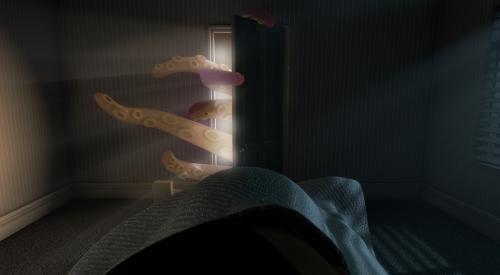| Contact Scott Sedam via e-mail at scott@TRUEN.com
|
When I was a kid, I got upset that everyone got mail but me. Day after day I'd traipse out to the road to get the mail with high expectations, hoping for something, anything. Other than the occasional birthday card from Granny, the box never had anything for me. It was de-pressing, and I complained bitterly to my parents.
My dad, being a clever guy and quite sick of listening to my whining, secretly filled out about 50 “free catalog” postcards with my name from the back of various magazines. Soon I was deluged with treasures such as vacation kits from Arizona, automobile brochures from Ford and catalogs from Lafayette Radio. Sure, most of it was junk, but I was in heaven. I had no idea why I was suddenly showered with postal manna. Finally I was somebody!
I was most taken with the massive auto parts catalogs from JC Whitney and I. Warshawsky, both out of Chicago. (I was stunned to eventually learn they were the same company.) In particular, I marveled at the myriad fuel-saving devices advertised. Excitedly, I would run to my dad, begging him to just try the “super-triad platinum fuel ionizer” or the “atom-busting mega-injector system.” Dad just smiled and always said, "We'll see."
Then one day I laid out the 14 different devices I had found between the two catalogs and added the numbers. I made a startling discovery. If you hooked all of these devices to our 1963 Galaxy, we would actually make more gasoline than we burned! This was so cool; I could hardly believe that no one else had thought of it. At age 11, I had cracked the code. This was alchemy to rival the great Merlin. What might I discover next? Perpetual motion? By my calculations, my dad could drive 200 miles during the week, and by Saturday we would have to siphon off about 20 gallons to get ready for the next week. We’d sell the 20 gallons, and I’d split the profit with my dad. I would be rich!
My parents were teachers and very nurturing people. They actually listened intently to my theory and examined my drawings and calculations — and did not laugh. They indulged me but gently suggested that because my idea might be patentable, I would be wise not to share it with too many others. I accepted their advice, with no thought of their ulterior motive. I do recall some late-night chuckles behind closed doors, however, with my name being whispered.
Ah, but who has the last laugh now? I recently figured out how to do virtually the same thing, albeit with a different business model. I have discovered how to make big bucks — no, huge bucks — in home building and do almost nothing. And because I’m a generous, sharing kind of guy, I’m going to let you in on the secret. All you have to do is buy a lot of software.
I’m not joking. I have all the advertisements and brochures right on my conference table. And as my kids are wont to say, “They couldn’t print this if it wasn’t true. The government wouldn’t let them.” These ads are all over the magazines and at every other booth at the International Builders’ Show. Plus I’ve been to a lot of these “e-presentations.” One says, “Documented savings of 16% on carrying costs.” The next one says, “The average builder can save $450 per home in construction costs.” This one touts, “Double your sales-force efficiency!” Another one “cuts P.O. and processing by as much 50%!” This one “eliminates most of the costs on managing service,” and another one communicates schedules to trades and suppliers so well that they’ll probably pay you for the privilege of working on your site! (OK, that one I made up, but that’s the notion they are trying to leave in your head.) It goes on and on. And if you add it all up, it’s JC Whitney all over again. We can do almost nothing, and every week we’ll have to haul a barrel full of cash to the bank.
A ridiculous proposition? Sure, but we hear it all the time. And to be fair, those of us in the training and consulting world could face similar accusations. We just aren’t as hot as the software guys, and we can’t afford $10,000 ads and $50,000 show booths. It’s like my old friend Steve Burch, who came to the housing industry from Chrysler 12 years ago, once said: “If Chrysler had every dollar their quality improvement teams claimed to have saved, they could have paid off their debt and then bought out both Ford and GM!”
So this is an appeal to all the software vendors out there: Chill out. Take a couple of deep breaths and back off on the unsubstantiated claims a bit. It is getting ridiculous, and people are starting to see through it. There is, without a doubt, tremendous waste in home building. And new technology and software can help us get at a lot of it. But I’ll let you in on a secret: Everything you claim you can save would pale next to the dollars saved if builders just learned how to schedule effectively with a notebook and a sharp pencil. If builders just learned to open projects for sale when they are really ready. If builders just trained their people well enough to not make the obvious mistakes. If builders just built truly productive, long-term relationships with their suppliers and trades. If builders just spent one-half the time and money on process improvement as they do on merchandising and advertising. (While I’m on the subject, if you spend more on advertising than you do on training and developing your people, you should be spanked and sent to detention.)
But I digress. The point is, everyone is always looking for some magic bullet, some grand leap to another level of efficiency. And the software and system vendors are playing to it. Improve 20% here! Improve 40% there! But the hard truth is, most substantive change, the kind that sticks, comes from a continual push for small, measured, step-by-step improvements. Incremental change. If you want to learn more about this, do read Jim Collins’ latest book, Good to Great, or anything by Dr. W. Edwards Deming. Don’t read Michael Hammer’s Reengineering the Corporation (you’ll be misled).
You can’t turn water into wine, and you can’t turn lead into gold. Forget about alchemy, perpetual-motion machines, magic bullets and miracle cures. As Collins says in his book, “Technology can be an accelerator of momentum, never a creator of momentum.” There is so much work to do and so many options to consider, it would help clear the air if our friends in the software world would play a little straighter with us. While they are dreaming up more fantastic ad copy, we’ve got work to do.












